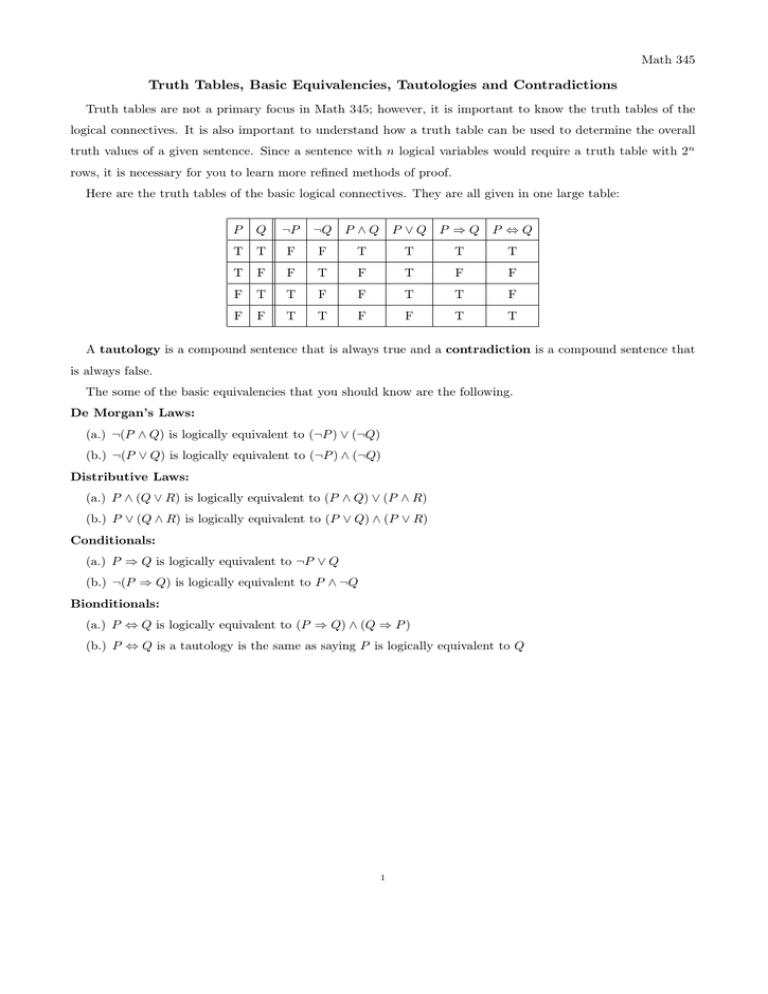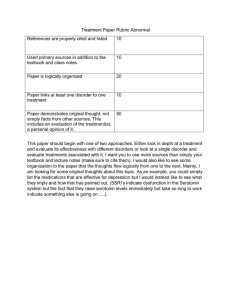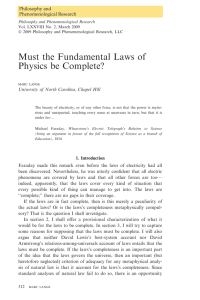Truth Tables, Basic Equivalencies, Tautologies and Contradictions
advertisement

Math 345 Truth Tables, Basic Equivalencies, Tautologies and Contradictions Truth tables are not a primary focus in Math 345; however, it is important to know the truth tables of the logical connectives. It is also important to understand how a truth table can be used to determine the overall truth values of a given sentence. Since a sentence with n logical variables would require a truth table with 2n rows, it is necessary for you to learn more refined methods of proof. Here are the truth tables of the basic logical connectives. They are all given in one large table: P Q ¬P ¬Q P ∧ Q P ∨ Q P ⇒ Q P ⇔ Q T T F F T T T T T F F T F T F F F T T F F T T F F F T T F F T T A tautology is a compound sentence that is always true and a contradiction is a compound sentence that is always false. The some of the basic equivalencies that you should know are the following. De Morgan’s Laws: (a.) ¬(P ∧ Q) is logically equivalent to (¬P ) ∨ (¬Q) (b.) ¬(P ∨ Q) is logically equivalent to (¬P ) ∧ (¬Q) Distributive Laws: (a.) P ∧ (Q ∨ R) is logically equivalent to (P ∧ Q) ∨ (P ∧ R) (b.) P ∨ (Q ∧ R) is logically equivalent to (P ∨ Q) ∧ (P ∨ R) Conditionals: (a.) P ⇒ Q is logically equivalent to ¬P ∨ Q (b.) ¬(P ⇒ Q) is logically equivalent to P ∧ ¬Q Bionditionals: (a.) P ⇔ Q is logically equivalent to (P ⇒ Q) ∧ (Q ⇒ P ) (b.) P ⇔ Q is a tautology is the same as saying P is logically equivalent to Q 1



